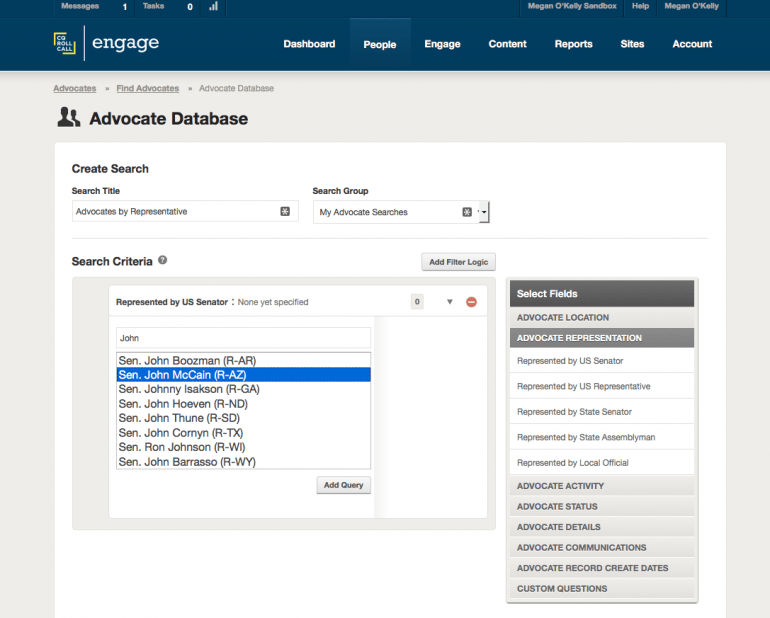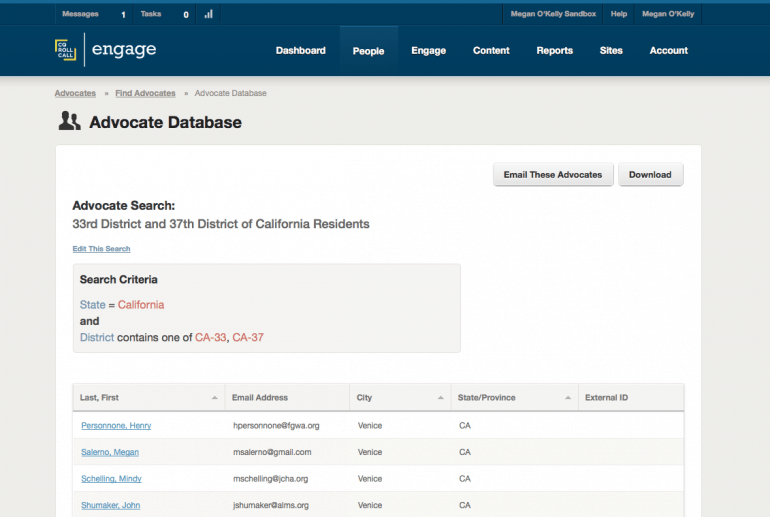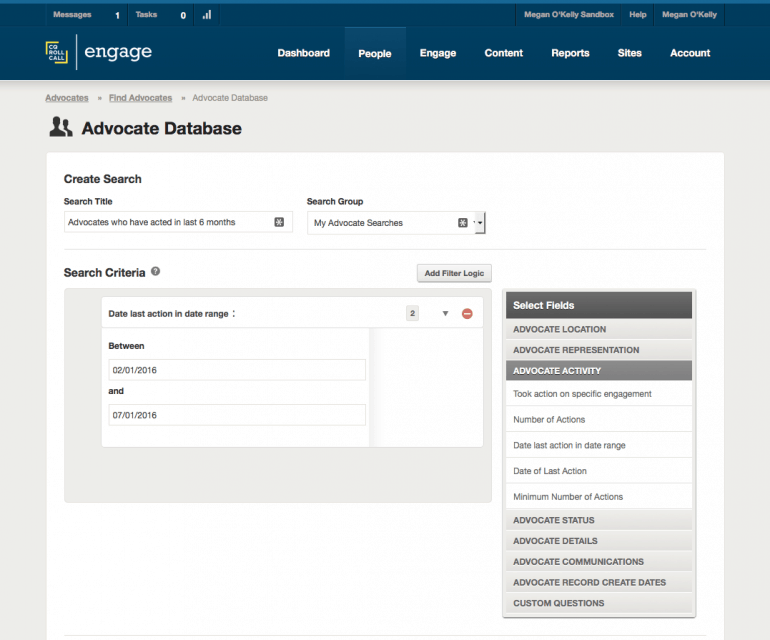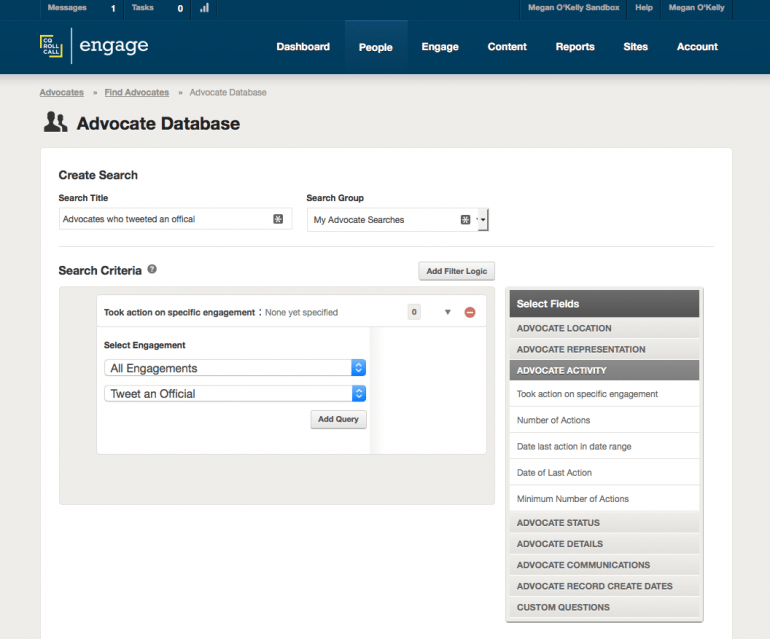Getting your advocates and supporters to act on your issues is an ongoing headache every government relations professional faces. But what if a couple of sharp keyboard moves ramped up those numbers, fast?
Segmenting your list so you know exactly who to go to on a specific issue will not only improve your open rates and action responses, it’ll avoid over-fatiguing your members with relentless “asks”.
Here’s how: Gary Meltz, principal at Meltz Communications, advises his trade association clients to only request action from members who are interested in a particular topic. “What you don’t want to do is constantly ask them to do things, email them too much, and become a burden,” he says.
His clients usually break their lists into four or five segments, based on political leanings, state of residence, issues they’re most passionate about, geographic location, and professional interests. That way they know who is most likely to engage on a particular issue, he says.
Then, go one further. Because many associations are comprised of various professions, all interested in the same goal: providers, suppliers, vendors and more, each of these sub-groups have particular interests specific to their profession. Making use of these sub-group interests is what leads to real success with segmentation.
“It’s a matter of identifying who is going to care the most on a particular issue to get actionable results,” Meltz says. “If you bother them too much, your response rates will go down.”
Segmentation for Growing Membership & Advocate Engagement
Segmentation can also help with greater member engagement and to grow your membership and ultimately your revenue.
Terry Streetman, membership and public affairs coordinator at the Michigan Nonprofit Association (MNA) says segmentation has greatly contributed to his organization’s success at meeting its mission.
MNA uses its email newsletters to reach both members and non-members, with the ultimate goal being turning them into full members who participate in the organization’s activities and services.
The association has a 40-50 percent open rate on newsletters, significantly higher than that for most nonprofits, which falls about 20 percent, according to Streetman.
MNA segments its lists according to readers’ specific nonprofit interests, policy interests, and geographic locations, which has led to a higher newsletter open rate, higher click through rates on links within the email, and a lower unsubscribe rate.
The organization’s general newsletter has increased in readership by 30 percent in a little over two years. Their job center newsletter, which offers job listings for nonprofit work in the state, has almost doubled in three years.
The job center newsletter came about as a result of segmentation.
When the association began offering job listings as a separate newsletter and interest blossomed, it led MNA to survey its readers and discovered they wanted a more frequent job listing email, despite the fact job listings are posted daily on the website.
Surveys of the readership also found that job listings readers would like to receive tips on how to get and succeed in nonprofit jobs. The increased interest allowed the association to include advertising for carefully chosen products and events, and the advertising revenue is used to support MNA’s mission, which now includes a resource manager.
MNA has boosted offerings for members that include national speakers at conferences, trainings, guides and publications, and it can send the offers directly to those they know are likely to be interested.
Streetman says the growth in MNA’s newsletter readership is directly related to sending more specific emails with the resources readers want.
As a result of their findings from segmentation, MNA also recently launched a new career development membership. “We talked about doing this for a long time, but didn’t have solid numbers to back it up. There’s definitely a hunger there,” he says.
Solid numbers for segmentation are also available from marketing software giant Hubspot, who found the results of those who segmented their lists included:
- 39 percent experienced higher open rates
- 28 percent experienced lower unsubscribe rates
- 24 percent experienced better deliverability and greater revenue
How Should You Segment? For those who need to send advocacy-focused communications that demand a result, there are several ways to do it. Engage clients have successfully segmented their lists based on zip code matching their advocates to target for local issues, or to promote events in specific areas or towns (below).
Others have engineered messages to members who signed up in the last 30 days to six months, introducing them to an advocacy program, or encouraging them to donate.
If a particular issue is going through Congress, or at the state or local level, targeting advocates in that representative’s district is an effective way of getting mobilization fast.
 To sub group your segmentation, you can siphon out your advocates by how they like to engage. Are there some who like to tweet at officials but who would never write a letter or sign a petition? Or vice versa? Segment them out and encourage them to take action in their favorite way during your next campaign.
To sub group your segmentation, you can siphon out your advocates by how they like to engage. Are there some who like to tweet at officials but who would never write a letter or sign a petition? Or vice versa? Segment them out and encourage them to take action in their favorite way during your next campaign.
Carving out your super advocates, the champion players you can always rely on to take action, give a donation, or interact regularly with your communications is also a tactic that pays dividends when you need a response in a hurry. A good advocacy platform like Engage will allow you to do all that carving up, and, even more importantly, let your member or advocate contact their local politicians, based on their zip code, in seconds.





